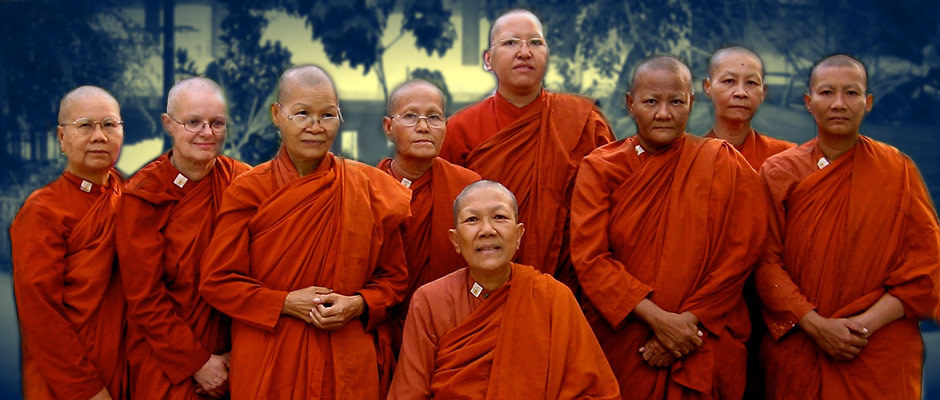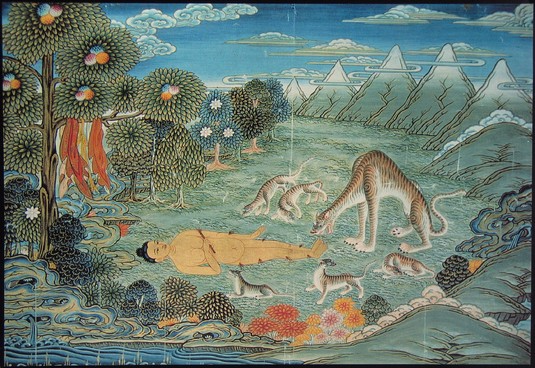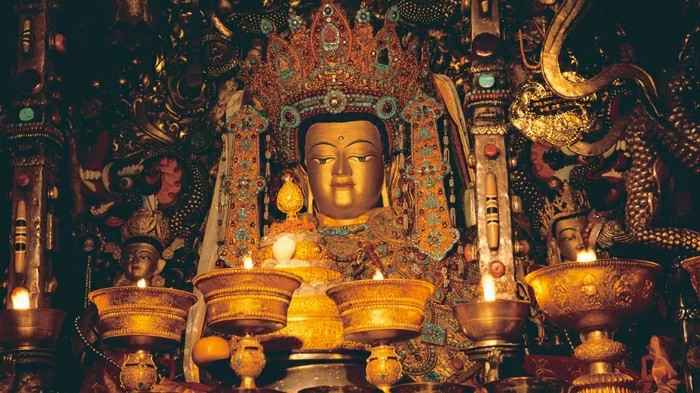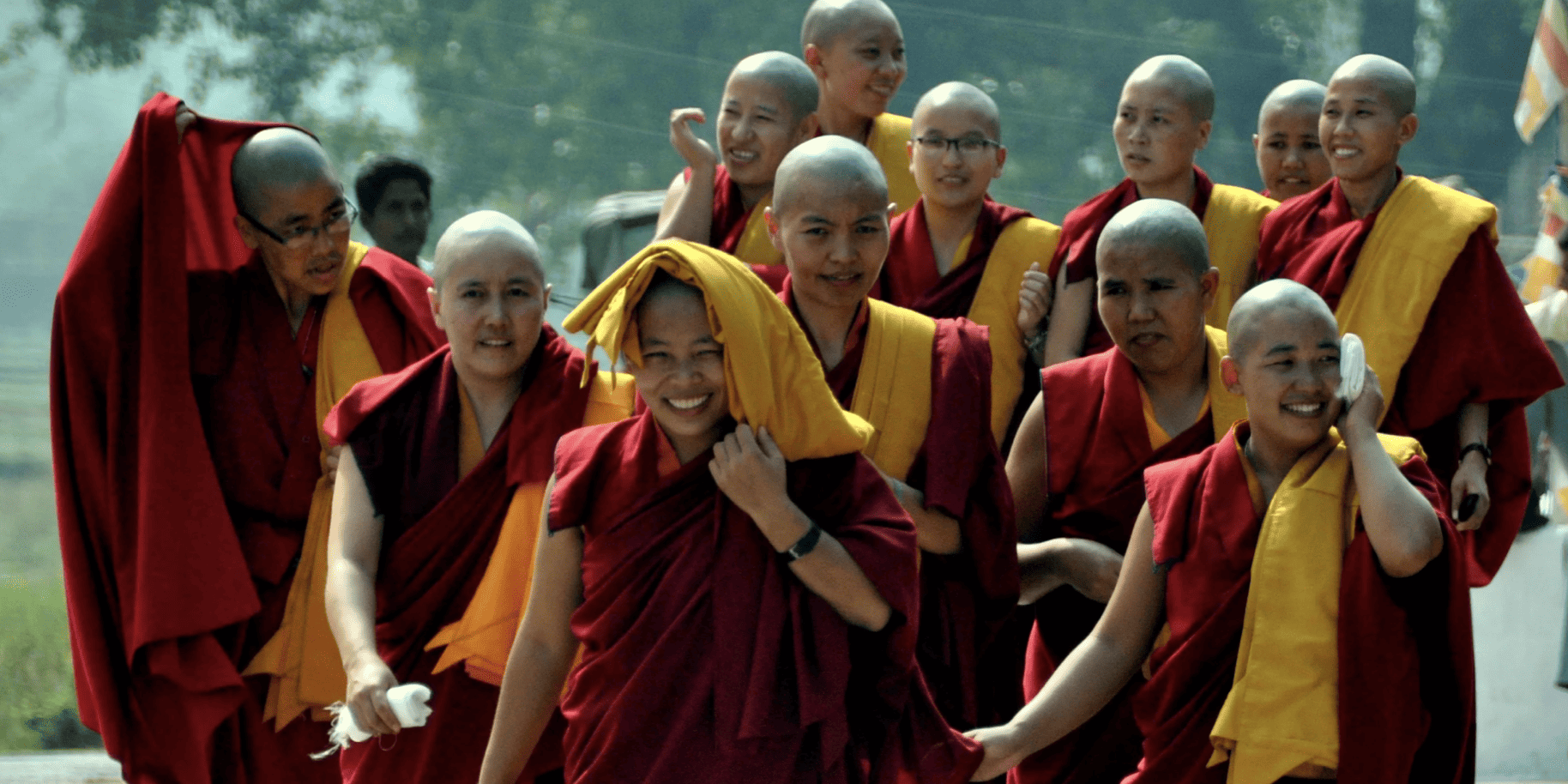Though women have always played an important role in Buddhism, they haven’t always been given the recognition or rights they deserve.
#1 The Buddha’s Initial Opposition to Nuns
The ancient chronicle recounts a significant event when Mahāpājapati, the Buddha’s aunt and foster mother, along with five hundred princesses, approached the Buddha with a request to join the sangha, which at that time was exclusively for bhikkhus (monks). Initially, the Buddha hesitated to grant permission.
The Buddha’s cousin, Ananda, decided to help by inquiring if women could become nuns and abide by the Vinaya (monastic rules) in the same manner as the monks. The Buddha hesitated, considering whether it would be a good idea. However, Ananda persisted and asked if women, given the appropriate opportunity, could attain full enlightenment. To this, the Buddha responded affirmatively, acknowledging that women possessed the same potential as men to achieve the highest levels of spiritual awakening. Consequently, the bhikkhuni order was established, allowing women to become nuns and participate in the monastic community.
#2 Buddhist Nuns: Embracing Additional Rules and Challenges

Women have long been second-class beings in Buddhism, holding a status well below that of males. There are more rules for nuns (bhikkunis) than monks (bhikkus), 331 as against 227, because while everyone has to control their desires, women have the additional burden of not ‘arousing the desires of men.’
Women were said to invite disasters and to be polluted, temptresses, dull, flirtatious, vain, and too flighty to cultivate themselves sufficiently to become arhats or enter Nirvana. Moreover, women bore a ‘karmic burden,’ being inherently inferior to men.
Nowadays, prominent Buddhist leaders reject the old notions of female inferiority and strongly support efforts toward greater gender equality.
#3 Abortion is allowed in Buddhism

The first Buddhist precept is the prohibition of killing any living beings. What about abortion?
Traditional Buddhism rejects abortion because it involves the deliberate destruction of a life.
Modern Buddhists, however, are more divided about the morality of abortion, and it becomes more of a personal decision. The choice to abort is, therefore, a highly personal and definitely not an easy one. It requires a careful and compassionate exploration of the ethical issues involved and a willingness to bear the consequences of the decision.
According to the teachings of Buddha, five conditions must be present to constitute an act of killing:
The thing killed must be a living being.
You, the killer, must know or be aware that it is a living being.
You must have the intention to kill it.
There must be an effort to kill.
The being must be killed as a result.
Motivation behind the action is the most important part. If the motivation is good, the karmic consequences will be different.
If the decision is taken compassionately, and after long and careful thought, then although the action may be wrong, the moral harm done will be reduced by the good intentions involved. A Buddhist will think about how much suffering may result from either the pregnancy continuing or from an abortion. There may be occasions where abortion is the most compassionate thing to do.
#4 The practice Chöd was created by a Tibetan woman

Machig Labdron, a contemporary of Milarepa, is a Tibetan woman who was an adept and an outstanding teacher, as well as a mother. She is the founder of a unique transmission lineage known as the Chöd of Mahamudra.
Popularly considered to be both a dakini and a deity, Machig Labdron is an emanation of Yum Chenmo, or Prajnaparamita, the embodiment of the wisdom of the buddhas. This is because she transmitted the practice of the female meditation deity Vajrayogini – Chöd – so widely that she came to be identified with the goddess.
During that time, Tibetan society was not quite ready for the idea of a woman becoming a Vajrayana teacher, let alone one who lived outside the range of any religious hierarchy and who single-handedly founded a new system. Despite whatever controversy had surrounded her up to that point, she engaged from then onward, until her death at the age of ninety-nine, in vast activities to propagate Chod.
Machig Labdron is a woman and a mother, but she is also a dakini and deity, legitimized as such by being an emanation of the “Great Mother of Wisdom,” Yum Chenmo, as well as of Arya Tara, who transmitted teachings and initiations to her. In this way, she becomes an equal of the greatest Tibetan masters of her time.
#5 The most sacred and important temple in Tibet was founder by a Chinese princess

Her name was Wencheng, and she founded the Jokhang Temple in Lhasa.
Wencheng, a Chinese princess of the Tang Dynasty, married the first king of Tibet, making a significant impact on establishing Buddhism as the national religion of Tibet.
- Follow us on Instagram, and Facebook.
- Subscribe to our YouTube channel.
- Looking for more great content? Dig into our blog.
- Email us at hi@meditationmarathon.me



